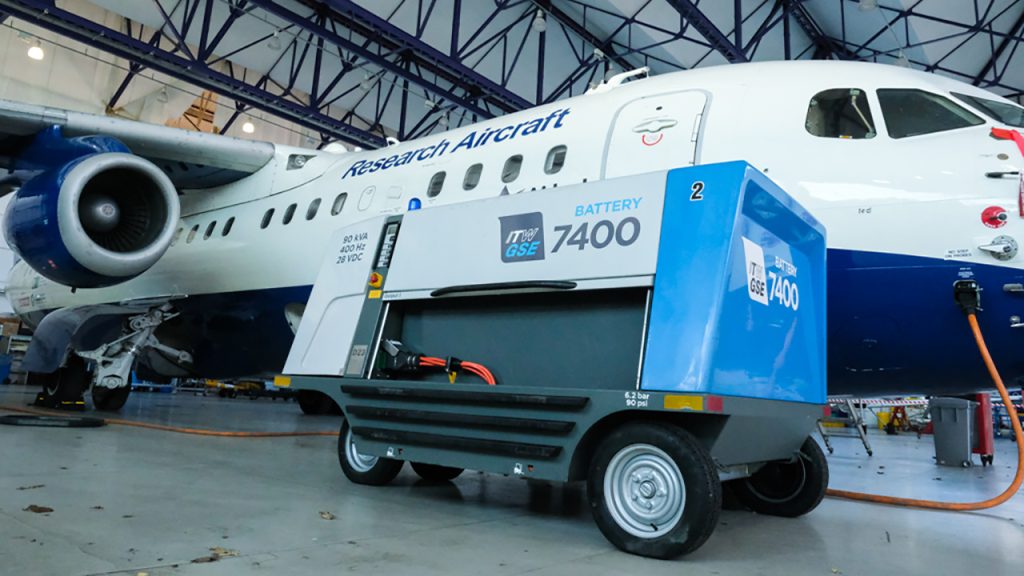
Sustainable ground power and towing equipment for the FAAM Airborne Laboratory
The FAAM Airborne Laboratory has invested in an electric-powered ground power unit and aircraft tug, in a significant move towards reducing carbon emissions from the research facility’s operation.
The FAAM Airborne Laboratory’s research aircraft, a specially adapted BAE-146 aircraft fitted with scientific instruments, is owned by UK Research and Innovation and the Natural Environmental Research Council* – who have a commitment to achieve net zero by 2040.
Alan Woolley, Head of the FAAM Airborne Laboratory, explains the significance of recent investments: “By changing the way we power and move the aircraft on the ground, alongside adopting other sustainable practices, we will be able to take action on reducing our emissions as a research facility. The FAAM Airborne Laboratory is taking important steps towards net zero goals, while continuing to make world-class measurements of the atmosphere.”
Electric ground power unit for setting up science in the skies
A mobile ground power unit is required for when the aircraft’s engines are off and equipment on board needs electricity, for preflight setup and postflight shutdown, and calibration tests while in the hangar or out on the airport apron. On a typical flying day, a ground power unit will be running for up to five hours.
The FAAM Airborne Laboratory currently uses a diesel ground power unit, which emits carbon dioxide, as well as nitrogen oxides, particulates, and other exhaust pollutants that are detrimental to local air quality and contribute to climate change.
Recently the facility successfully tested an electric ground power unit, and found it was capable of replacing the existing diesel unit. The new electric ground power unit – which the facility is awaiting delivery of later this year – will not produce any local air pollution or greenhouse gas emissions, will reduce contamination of sensitive scientific measurement equipment on board the aircraft, and will also cut down noise disturbance.
Electric tug for a large research aircraft
Moving equipment, ground power units, and the aircraft itself requires a vehicle capable of towing and transporting large items around an airfield. The research facility has recently procured an electric-powered tug that is capable of transporting the aircraft and its ground power unit over short distances. Not only will this new tug reduce greenhouse gas emissions and air pollution across the airfield, it will also provide staff with cleaner and quieter working conditions.
A sustainable future for airborne research
As well as moving to electric powered ground power units and towing equipment, the FAAM Airborne Laboratory has recently flown with sustainable aviation fuel for the first time, and has imminent plans for a ready supply and storage at its Cranfield Airport base. The hangar facilities will start to use a local solar energy supply, which means the supply of electricity to the new ground power unit and tug will also be more sustainable.
By preventing the release of fossil-based greenhouse gas emissions and air pollutants from the ground power unit and aircraft tug, the FAAM Airborne Laboratory is helping to combat climate change and poor air quality through the way it operates – not just through the science it supports.

*The FAAM Airborne Laboratory’s research aircraft is owned by UK Research and Innovation and the Natural Environmental Research Council. It is managed through the National Centre for Atmospheric Science, and leased through the University of Leeds. The aircraft is supported, modified and upgraded by BAE Systems, operated by Airtask Group, and maintained by Avalon Aero. It is hangared in Bedfordshire, with Cranfield Airport at Cranfield University.
